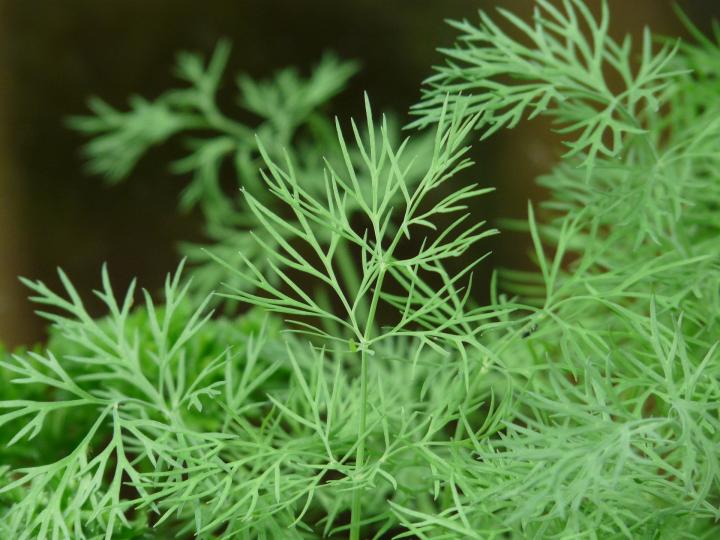
Dill is an annual, self-seeding plant with feathery green leaves. It is used most commonly in soups, stews, and for pickling. Dill is easy to grow and attracts beneficial insects to your garden, such as wasps and other predatory insects.
Planting
- Sow dill seeds about ¼-inch deep and 18 inches apart in rich soil, then gently rake the seeds into the soil. The soil should be around 60 to 70ºF for best results.
- Dill does not grow well when transplanted, so start the seeds fresh in the garden in early summer. Make sure to shelter the plants from strong winds.
- After 10 to 14 days, the plants should appear in the soil. Wait another 10 to 14 days, then thin the plants to about 12 to 18 inches apart.
- In your garden, plant dill next to cabbage or onions, but keep the dill away from carrots.
Care
- Water the plants freely during the growing season.
- In order to ensure a season-long fresh supply of dill, continue sowing seeds every few weeks. For an extended harvest, do not allow flowers to grow on the plants.
- If the soil remains undisturbed throughout the growing season, more dill plants will grow the next season.
Pests/Diseases
- Leaf spot and occasionally a few other types of fungal leaf and root diseases
Harvest/Storage
- As soon as the plant has four to five leaves, you can start harvesting. Pinch off the leaves or cut them off with scissors.
- If you have a lot of plants, you can pinch off entire stalks.
Recommended Varieties
- Fernleaf dill, which is good in potato salads, cucumber soup, and fish dishes
Wit & Wisdom
For sweeter breath, chew dill seeds.
Recipes
- Dill and Potato Cakes
- Refrigerator Dill Pickles
- Dilled Green Beans
Cooking Notes
Many people love to make dill pickles with their fresh dill. Learn how with our tips and recipes for dill pickles or our video on making dill pickles. You can also add dill as a seasoning on countless recipes.






